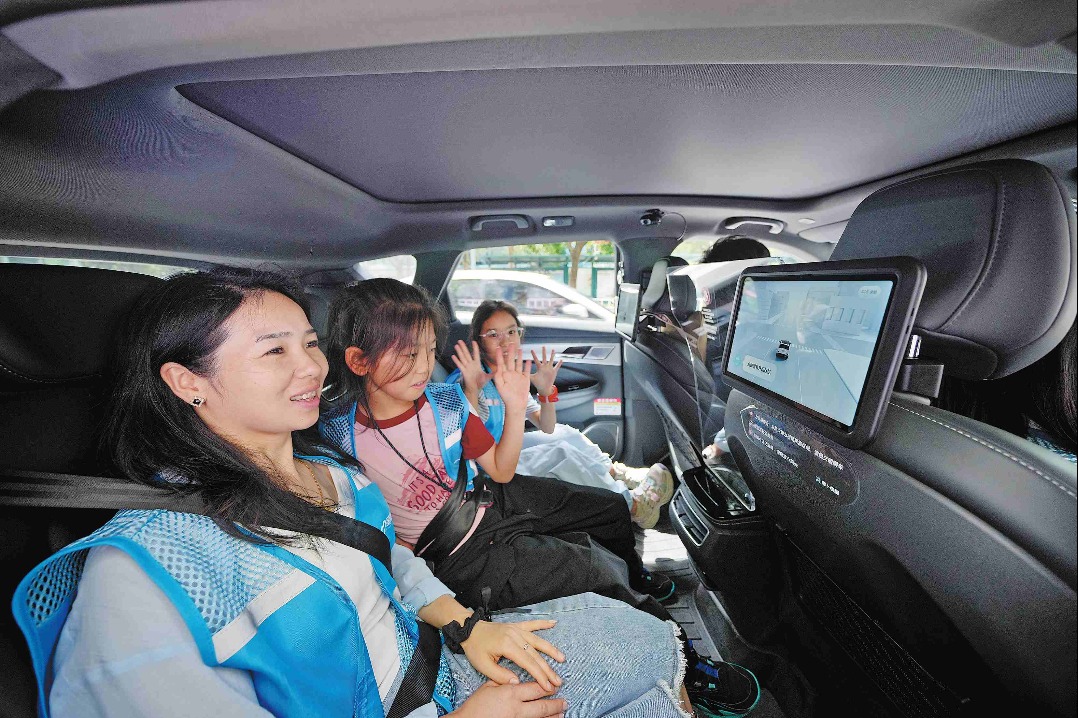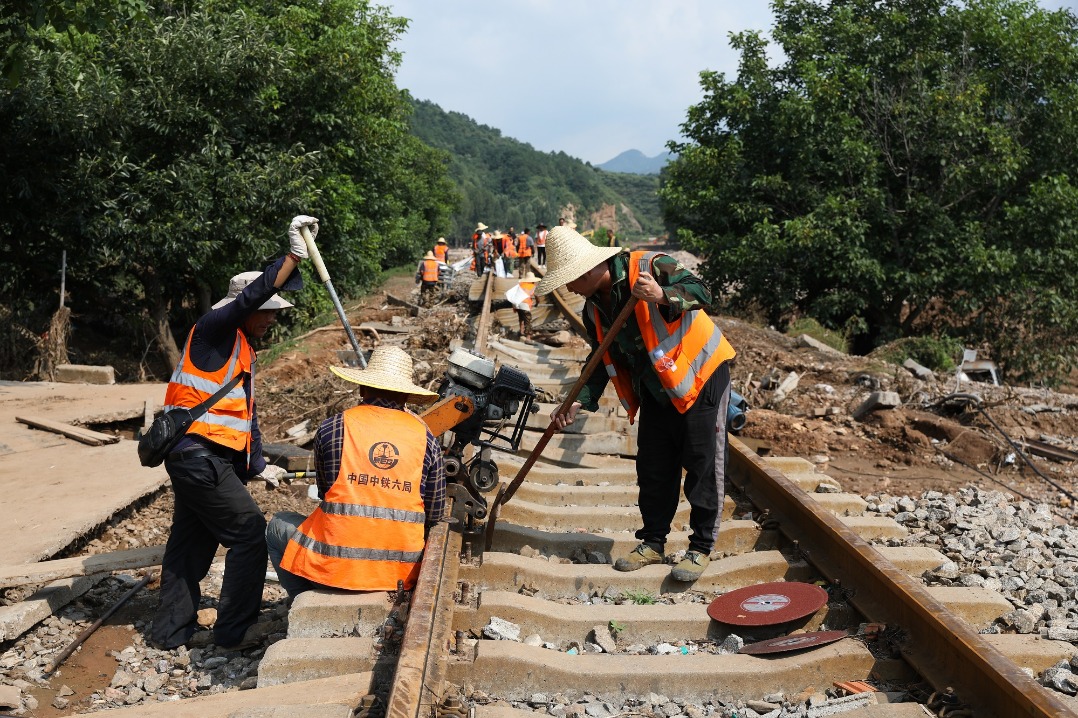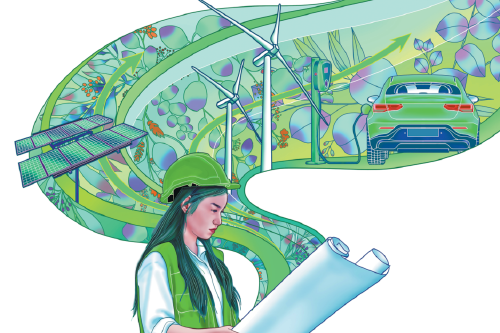Bridging the urban-rural digital divide


"Village BA" is a rural basketball tournament which, from a humble local pastime, has evolved into a cultural phenomenon eagerly watched by people across China. On court, the villagers play their hearts out. Off court, silver jewelry clinks in tune with traditional reed pipes, with hand-woven banners dancing to the melody. It's a dazzling fusion of the rustic charm of villages and the modern glitter of cities.
This is rural culture at its best, grassroots sports and digital communication combining to advance rural vitalization. More than a craze, Village BA is a portrait of social cohesion, and symbolizes local culture's stride onto the national stage.
Every drumbeat, lay-up and livestream reflects a different story — young people returning home to start businesses, communities rediscovering their pride. That these games regularly trend on social media, garnering hundreds of millions of views, has much to do with the power of digital technology and the villagers' desire to lead a better life.
The standard "digital divide" narrative of "cities surging ahead, rural areas being left behind" is all too familiar. But China's villages are challenging that narrative. Across the country, some rural residents are learning to master digital skills, with many livestreaming their harvests, making short videos on village life, and selling their products directly online.
For some villagers, digital technology has become part of their social fabric, vitalizing the rural economy and culture, even helping improve local governance. It's drawing a picture of a "digital countryside" that is both bucolically rural and vibrantly modern.
Of course, none of this would have been possible without hard infrastructure. The government has made digital infrastructure a cornerstone of its rural vitalization policy, and it shows.
By December 2024, China had established over 4.19 million 5G base stations with about 209 million gigabit broadband users, providing "gigabit for every county, 5G for every township, broadband for every village". No wonder rural internet penetration has reached 67.4 percent.
Apart from 5G and broadband enabling faster downloads in townships and villages, mobile payment apps such as WeChat Pay and Alipay are now ubiquitous in rural areas. There are more than 158,000 village-level e-commerce service stations and 346,000 village-level delivery logistics comprehensive service stations. This has helped solve the "last mile" parcel delivery problem in the countryside, with companies such as Tencent even offering "first AI tools classes" tailored for villagers. These developments ensure rural communities participate in the digital economy on an equal footing.
With this web of connectivity in place, the once-daunting city-village divide is gradually being bridged, one broadband cable, one mobile app at a time.
But rural areas also used to face a content divide. Early rural short videos were often called tuwei (folksy or earthy), full of exaggerated performance and cheap props. They were rather stereotypical, more caricature-like than cultural.
Nevertheless, for many rural users, it was the first attempt at self-expression, a rustic "notice me" shout in the digital void. Some urban viewers loved it, as a novelty sideshow. But that's changing. Influencers like Li Ziqi have pioneered a new aesthetical "return to pastoral life" with cinematic shots of rolling hills, beautiful handicrafts, and serene rural life. Her works enable millions to see rural China's real beauty.
Today, a growing number of ordinary villagers are following in her footsteps. They're using short videos and livestreams to share their creativity with and tell their stories to the people, and preserve their dialects. Their growing cultural confidence has amplified rural voices in the digital landscape, turning passive content consumers into active creators and showcasing rural culture.
However, there remains a final barrier to cross: digital literacy and technology. Many farmers still cannot see how digital tools could improve their lives.
Enter short video and livestream e-commerce. Suddenly, the abstract promise of digitalization has become concrete. One smartphone is all it takes to turn farming chores, crafts or scenic views into marketable content on Douyin or Kuaishou. The number of rural content creators is an eye-opener. In 2024, the Douyin platform sold 7.1 billion packages of special agricultural products. That's 17.4 million orders a day, supported by 115.7 billion related short videos and 38.25 million hours of livestreaming.
When a villager emerges out of poverty through short videos or livestreaming sales, neighbors take notice — and try to emulate him/her. Nothing kills skepticism like profit. It's the surest way to break down psychological barriers and get rural residents onboard the digital bandwagon.
China's rural digital transformation is not a one-dimensional "connect and forget" model. It is a uniquely Chinese, replicable and scalable approach to bridging the urban-rural digital divide. It closes gaps in connectivity and device access, as well as unleashes new drivers of growth, boosts cultural confidence, and spreads digital awareness in the countryside.
Digitalization is not just a new growth engine; it's also opening up new possibilities for revitalizing rural areas. Each like, comment and share on a short video or livestream can become a "traffic channel" — with the potential to evolve into industrial, cultural, or development momentum.
Indeed, digital tools are helping farmers shift from passive spectators into central actors, propelling villages from the periphery toward becoming pivots for development, and reshaping how rural China works and sees its own future.
As 5G, AI, big data and blockchain reach even the remotest villages, the rural digital picture will become even more vivid. A digital countryside with technological advancement, cultural resilience, and economic vitality is already emerging across China.
Ouyang Rihui is vice-dean of China Center for Internet Economy Research at the Central University of Finance and Economics, and vice-president of the Chinese Association of Market Development; and Li Xiangyu is a research fellow at the Postdoctoral Research Station of China Merchants Securities. The views don't necessarily reflect those of China Daily.
If you have a specific expertise, or would like to share your thought about our stories, then send us your writings at opinion@chinadaily.com.cn, and comment@chinadaily.com.cn.


































